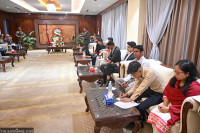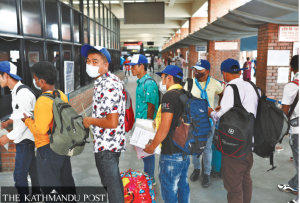Editorial
Between shame and safety
Destigmatising abortion warrants its own approach and attention
When a 25-year-old woman from Sindhupalchok found out she was pregnant, she was petrified. She hadn’t planned on this one. She was still breastfeeding her first-born, and the financial situation at home was not welcoming of another baby either. But more importantly, she herself was not ready for a second child. Yet, she could never muster the courage to broach the topic of abortion with her family. There was a health centre an hour away from home where safe abortion was available. But due to the unforgiving stigma attached to abortion, especially in rural areas, she had to borrow bus fare to Janakpur. Although there was free abortion service available near her house, she resorted to an unfamiliar place. The fear of villagers and family members alike assassinating her character compelled her to go through the ordeal.
Abortion was legalised in Nepal in 2002. While many women around the world are still fighting for their right to decide what to do with their bodies, Nepal’s decision to legalise abortion seems quite progressive. The government has deployed 3,000 trained health workers in rural places across the country to spread awareness. There are safe abortion services available in 51 district hospitals with approved medication. In 29 district hospitals, abortion is done with the help of machines. The Health and Population Ministry has given permission to more than 1,200 health centres to provide their services in case of complications during and after abortion procedures.
Yet, despite its being declared lawful, many women are unaware of it. Secondly, even if women are aware of it, the cultural stigma attached to abortion forces many of them to seek non-safe options. According to the Family Health Division under the Health and Population Ministry, only 43 percent of the women having an abortion opt for government approved safe facilities.
A 2017 study by the Guttmacher Institute and the Centre for Research on Environment Health and Population Activities found that in Nepal 58 percent of abortions were products of ‘clandestine procedures provided by untrained or unapproved providers or induced by the pregnant woman herself’. Gita Gurung, a Kathmandu-based medical professional, told Kantipur Media that the stigma forces many women to resort to unapproved (and highly dangerous) ‘at home’ methods. Some of these horrific practices include consuming off-the-market ‘abortion pills’, turning to witch doctors and even taking matters into their own hands by inserting sharp objects into their reproductive system.
Clearly, access to resources and abortion-friendly legislation are not enough to ensure pre and postnatal safety. Steps must be taken to destigmatise abortion through strategic behaviourial change practices. Herein the importance of sex education in schools cannot be overstated. What’s more, it is imperative to expand community awareness of reproductive health benefits. Ads on TV and radio are still a good way to reach the masses. Although unconventional, personal storytelling could also significantly contribute to destigmatising abortion and starting meaningful conversations.
To carry a pregnancy to term or not is a transformative decision. Legislation and access to resources will be meaningless without addressing the culture that continues to shame women for their planned and unplanned personal choices.




 17.12°C Kathmandu
17.12°C Kathmandu














